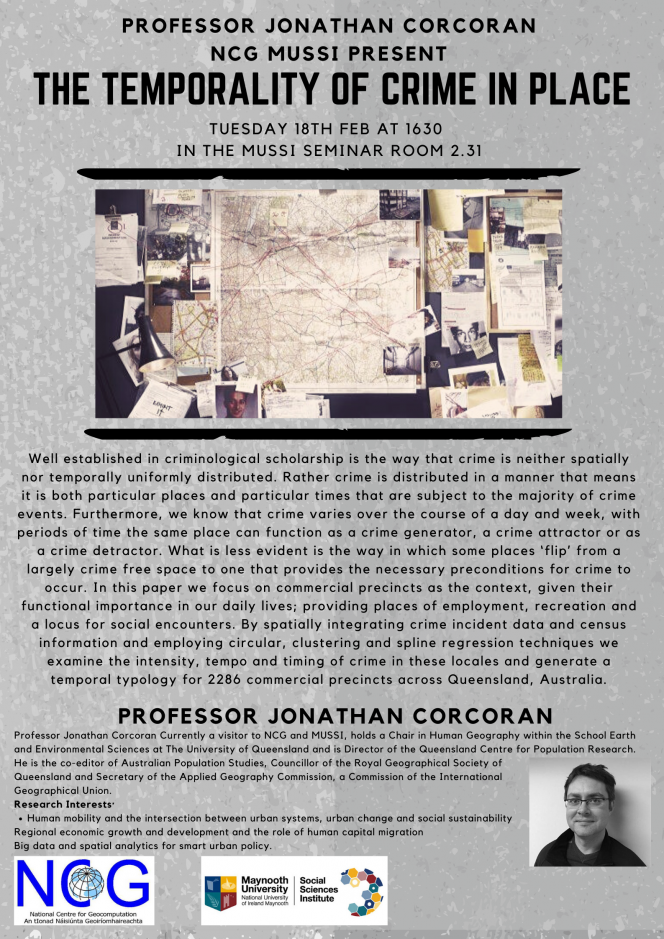
Abstract: Well established in criminological scholarship is the way that crime is neither spatially nor temporally uniformly distributed. Rather crime is distributed in a manner that means it is both particular places and particular times that are subject to the majority of crime events. Furthermore, we know that crime varies over the course of a day and week, with periods of time the same place can function as a crime generator, a crime attractor or as a crime detractor. What is less evident is the way in which some places ‘flip’ from a largely crime free space to one that provides the necessary preconditions for crime to occur. In this paper we focus on commercial precincts as the context, given their functional importance in our daily lives; providing places of employment, recreation and a locus for social encounters. By spatially integrating crime incident data and census information and employing circular, clustering and spline regression techniques we examine the intensity, tempo and timing of crime in these locales and generate a temporal typology for 2286 commercial precincts across Queensland, Australia.

